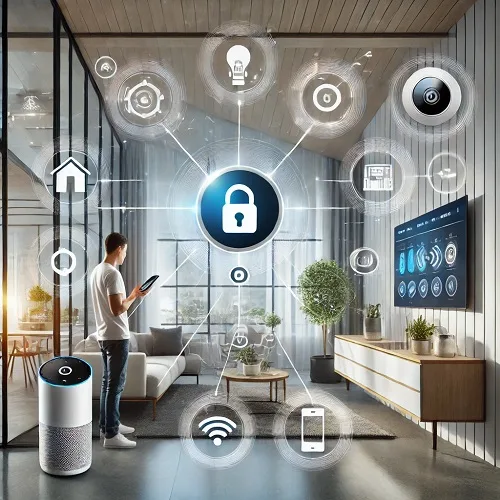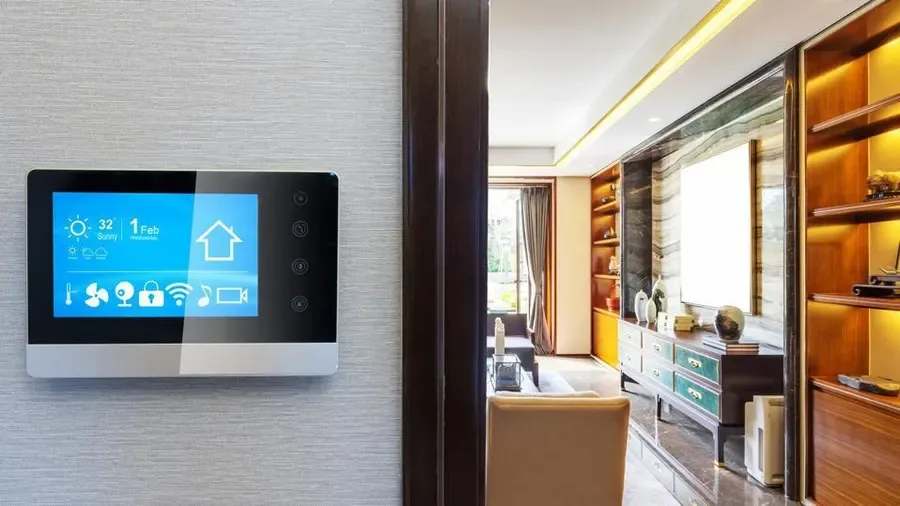
Smart Home Technology Review
Smart home technology has revolutionized the way we interact with our living spaces, offering convenience, efficiency, and security like never before. This review explores the history, functionality, current applications, and potential future uses of smart home technologies.
What is Smart Home Technology and Its History?
Smart home technology, also known as home automation, refers to the use of internet-connected devices to control and automate household systems such as lighting, heating, security, and entertainment. The concept dates back to the early 20th century, but it gained significant traction in the 1980s with the advent of computer networking and advancements in sensor technology. However, it was the integration of Wi-Fi and smartphones in the 21st century that truly propelled smart home technologies into mainstream adoption, enabling more seamless and user-friendly control over various home systems.
The initial implementations were limited to simple tasks like controlling lights or adjusting thermostats remotely. Over time, the technology evolved to include voice-activated assistants, energy management systems, and comprehensive security solutions. The development of Internet of Things (IoT) devices has been a major driving force, allowing various devices to communicate and work together harmoniously.
How Smart Home Technology Works
Smart home technology operates through a combination of hardware, software, and connectivity. The hardware includes sensors, controllers, and actuators that interact with the home environment. Sensors can detect changes in temperature, light, motion, and other variables, while actuators can control devices like lights, locks, and HVAC systems. Controllers, such as smart hubs or apps, act as the central command center, coordinating the activities of various devices.
Connectivity is another crucial aspect, often facilitated through Wi-Fi, Bluetooth, or specialized smart home protocols like Zigbee and Z-Wave. These protocols ensure that devices from different manufacturers can communicate effectively. Additionally, smart home systems are often integrated with cloud services, allowing for remote access and control via smartphones or other internet-connected devices. Voice assistants like Amazon Alexa, Google Assistant, and Apple’s Siri further enhance user interaction by enabling voice commands for various tasks.
Current Applications of Smart Home Technology
Smart home technology is widely used in a variety of applications, providing convenience and efficiency to users. For instance, smart lighting systems allow users to control lights remotely or set schedules, enhancing energy efficiency and convenience. Smart thermostats adjust the temperature based on user preferences and occupancy patterns, helping to reduce energy consumption and costs.
Home security has also been revolutionized by smart technology, with smart locks, cameras, and alarm systems offering real-time monitoring and alerts. These systems can be accessed remotely, providing peace of mind for homeowners. Additionally, smart appliances, such as refrigerators, washing machines, and ovens, offer advanced features like remote operation, maintenance alerts, and integration with other smart devices for seamless operation.
Effectiveness of Smart Home Technology
The effectiveness of smart home technology is evident in its ability to enhance comfort, security, and energy efficiency. Smart thermostats, for example, have been shown to reduce energy consumption by learning user habits and adjusting heating and cooling accordingly. Similarly, smart lighting systems can significantly lower electricity bills by automating light usage based on occupancy and natural light availability.
In terms of security, smart locks and cameras provide robust solutions that deter intrusions and allow for real-time monitoring. The integration of these devices with smart assistants and apps means users can receive instant alerts and take action from anywhere in the world. Moreover, the convenience offered by smart appliances simplifies daily chores and reduces the time spent on household tasks, thereby improving overall quality of life.

Potential Future Uses of Smart Home Technology
As smart home technology continues to evolve, its applications are expected to expand into new areas. One promising area is the integration of health monitoring systems into smart homes. For instance, sensors could monitor vital signs and alert healthcare providers in case of anomalies. This would be particularly beneficial for elderly individuals or those with chronic conditions, enabling proactive healthcare management.
Another potential application is in the realm of sustainability. Smart home systems could optimize water usage, reduce waste, and monitor air quality, contributing to a more sustainable living environment. Moreover, advancements in artificial intelligence and machine learning could enable even smarter automation, where systems not only respond to user inputs but also anticipate needs and optimize performance accordingly.
Is Smart Home Technology Worth the Investment?
The question of whether smart home technology is worth the investment depends on individual needs and preferences. For those seeking enhanced convenience, security, and energy efficiency, smart home systems offer significant benefits. The initial investment can be substantial, especially when installing comprehensive systems, but the long-term savings in energy costs and the added security can justify the expense.
Additionally, the convenience of managing home systems from a single interface, whether through a smartphone or voice assistant, adds a level of comfort that traditional systems cannot match. However, potential buyers should consider the ongoing costs associated with maintaining and upgrading these systems, as well as the potential privacy concerns related to data collection and internet connectivity.